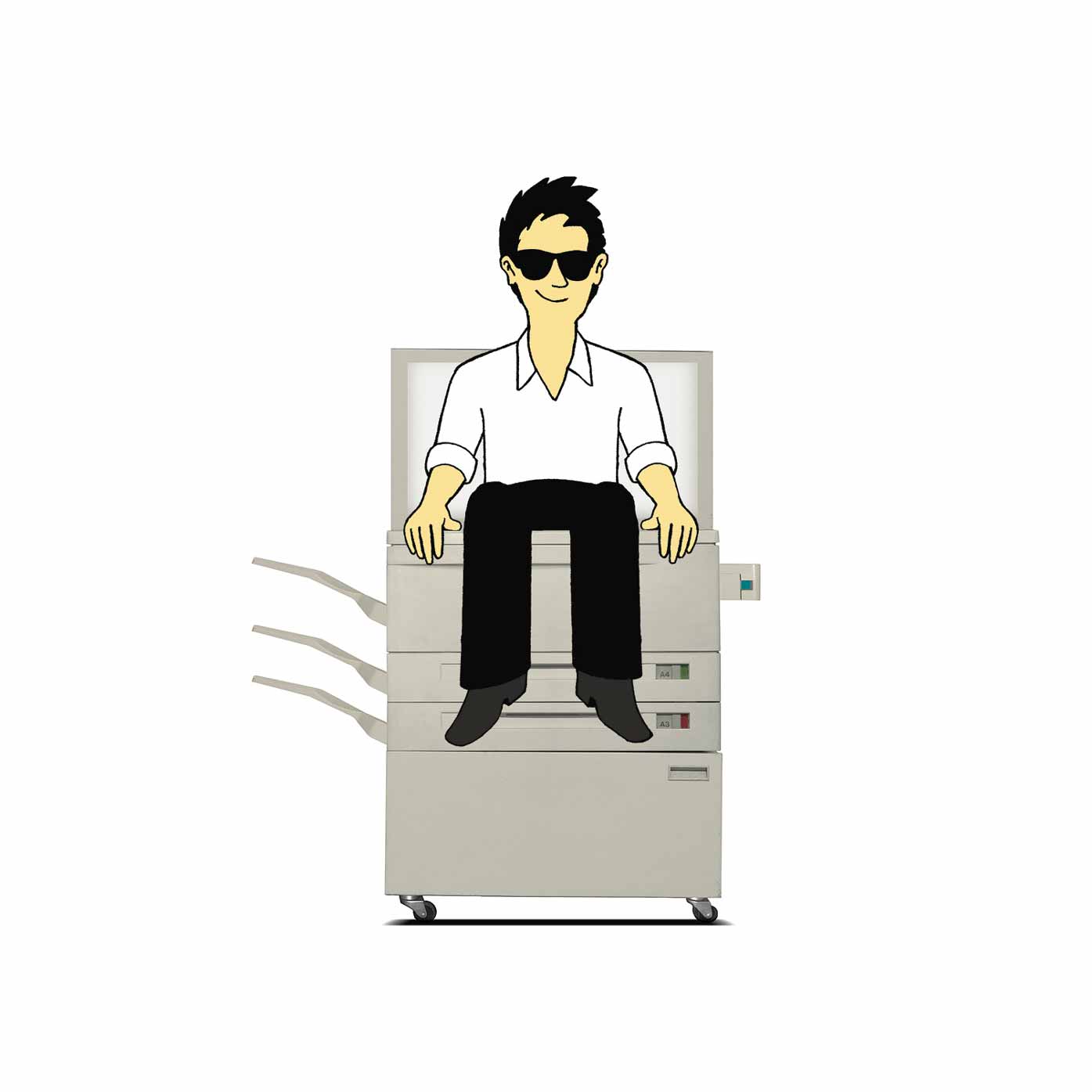
In 2003, when I was just a 31-year-old staff writer at TIME, deputy managing editor Steve Koepp came into my office and told me that I had the fourth highest expenses at the magazine, just below the Middle East bureau chief, who had to pay for a staff, a house and plane tickets to the Middle East. I, meanwhile, expensed a $400 dinner with Bruce Willis that Bruce Willis was not at. Steve told me he was asking everyone to reduce their corporate AmEx charges by 25%. The lesson was clear: I needed to make sure I spent every cent of my remaining 75% in case he returned with further reductions.
That’s also when I learned that the fastest way to spend corporate money is at hotels, thanks to their many taxes, fees and fee taxes. But after spending a lot of time in hotels, I have devised a way for them to cut down on their costs, which they could pass on to me and I could pass on to restaurants: Get rid of the business centers.
I’m sure business centers were once nests of activity, with drunken salespeople Xeroxing their butts and then doing something with the images that I can’t figure out since it was before social media. But now the centers have become tiny, dark and empty due to the fact that people carry computers with them in their pockets. I didn’t know exactly what was in these rooms, but I suspected that there would be a fax machine, a copier and a time machine to return people to the present.
The only explanation I could think of for their continued existence is that perhaps travel guides require that hotels have them to get the highest rating. This is why hotels have room service, which is a money loser even though the cheeseburgers cost $15. I’m guessing that’s because of the cleanup. Think about why you don’t eat in your bed, and then think about what you’d do when eating in the bed of a faceless corporation. If the Dateline reporters had an ultraviolet light that showed dead cow on hotel comforters, they would be legally blind.
But the editor in chief of the North American Michelin red guide, who can’t reveal his or her name for fear of being swarmed by hoteliers, told me that none of the guides requires a business center. He or she does, however, appreciate a good one. “I’m using one today. Our laptop security is very tight, so sometimes I can’t get online in the room,” the editor said. Unfortunately, hotels will now know who the editor of the Michelin guide is by looking for the one person in their business center.
To find out if anyone else uses these places, I staked out the business center of the Luxe Hotel in Beverly Hills. It’s a small, windowless room equipped with a PC, a Mac, a LaserJet printer and a tray filled with pads, pens, Post-it notes, paper clips, rubber bands, a stapler, a tape dispenser and a ruler. It is the perfect place to do business if your business is writing episodes of MacGyver.
I expected to be waiting alone on my stakeout for hours until finally someone came in to print out his ticket to return to the old country by sea. Instead, after just three minutes, a person walked in. As I suspected, he was an older man. Mark Posnick, however, put his iPhone 5 on the desk, used AppRiver to connect safely to his email and printed out a document for his son. “It’s amazing, the technology we carry around. You can do anything,” said Posnick. “Except print.” I am going to suggest this as the new slogan for the magazine industry.
It’s not just old people and anonymous editors who use these rooms. Barry Pollard, senior vice president of hotel operations for Kimpton Hotels & Restaurants, told me that international travelers use the computers to avoid huge data charges. And conferences demand business centers in case the attendees have trouble printing, scanning, PowerPointing or escaping the horror of conferences for a few minutes.
But the main reason business centers still exist–and in fact are getting bigger–is for socializing. Essentially, they now function as the world’s lamest bars. Guests spend so much time in their rooms that they never get to see other people. Which is strange, since seeing other people is one of the top reasons people say they travel. To make working more social, Kimpton is reducing its business centers and converting its lobbies into casual, wi-fi-enabled, outlet-filled, coffee-shop-like spaces. Sheraton has “Link@Sheraton” lobbies, and Holiday Inn has “e-bars,” which are bold innovations that look a lot like lobbies with more outlets.
While you stare at your screen at the Mandarin Oriental business centers, you will soon be able to order a glass of champagne, borrow a tablet and perhaps Tinder someone in the very same room. “A combination of business travel and technology creates isolation,” says Monika Nerger, Mandarin Oriental’s chief information officer. “There’s a desire to be in a social environment that is tech-friendly.” It sounds like the days of butt Xeroxing are coming back.
More Must-Reads from TIME
- Cybersecurity Experts Are Sounding the Alarm on DOGE
- Meet the 2025 Women of the Year
- The Harsh Truth About Disability Inclusion
- Why Do More Young Adults Have Cancer?
- Colman Domingo Leads With Radical Love
- How to Get Better at Doing Things Alone
- Michelle Zauner Stares Down the Darkness
Contact us at letters@time.com